There’s no better time than now for brands to rethink their Facebook presence.
Between Facebook’s recent pledge to deemphasize promotional content and more brands coming into the fold, businesses need to be on their A-Game if they want to thrive on Facebook in the future.
And until you conduct a Facebook audit, the future of your presence on the platform is little more than a question mark.
Also, don’t forget to check out our other articles on auditing:
The Speedy, 4-Step DIY Facebook Audit
The idea of conducting a Facebook audit might seem daunting, but it doesn’t have to be like pulling teeth.
In fact, you can conduct your own do-it-yourself audit in a matter of minutes. And that’s exactly what we’re going to break down in this step-by-step guide.
Simply put, you need to focus on elements of Facebook that matter the most to your followers, search engines and the platform’s ever-changing algorithm.
That said, let’s dive right in:
1. Make Sure Your Profile is Complete
Filling out every field of your business’ profile might seem like a no-brainer, but you’d be surprised at how many incomplete profiles are out there (even from major brands).
Simply put, a complete profile signals professionalism. Not only does a profile rich with information help clue your followers in about your business, but also allows you to tell your story. Loot Crate‘s profile is a shining example of a complete profile with personality (take a look at their “Company Overview” and “Story” sections):

To be fair, you may have just winged it the first time you keyed in your information. As part of your Facebook audit, it’s time to give that copy your attention.
Take the time to go line by line to guarantee you’re not missing anything. For example, make sure you’ve double-checked these following elements of your page:
- You’ve claimed and customized your page’s URL (for example, facebook.com/yourbrand versus a generic, jumbled URL)
- An appropriate call-to-action has been selected for your page based on your business’ goals (“Sign Up” for an email opt-in, “Learn More” for a landing page, etc.)
- Appropriate links to your website and other social profiles
- For brick and mortar brands, make sure you’ve provided your essential information such as a location, hours and business category
Note: These details don’t matter just for the sake of completion. They have SEO implications as well. Google just about any brand, big or small, and you’ll notice that their social profiles tend to be in the top three results.

As a reminder, a complete profile is an absolute must for local brands with physical locations. This is an era where people use Facebook as their own sort of search engine to find nearby businesses. You need to let potential customers know everything they need to know when they land on your profile.
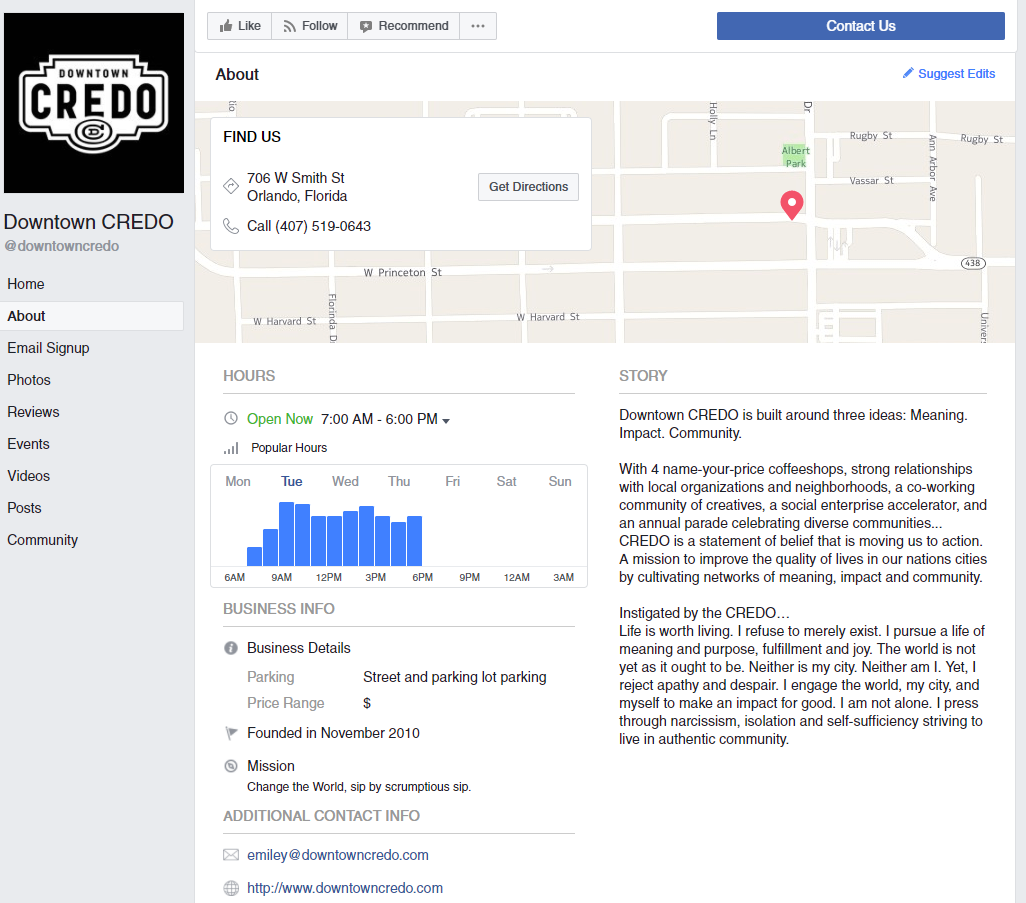
For an added bonus, a complete profile also makes it easier to find you via Google.

Incomplete or incorrect information can be detrimental to local businesses, especially in a day and age where some people assume a business’ Facebook page is more up-to-date than its website.
2. Take the Time to ‘Look the Part’
Although looks aren’t everything, your page’s imagery can certainly impact your ability to grow a substantial Facebook following. From establishing trust to capturing the attention of new followers, analyzing the aesthetics of your profile is a key aspect of a Facebook audit.
What makes a sleek, attractive profile? The following elements, for starters:
- A profile picture and cover photo are appropriately sized
- Brand’s imagery that gives off a professional vibe and is appropriate for Facebook
- A verification checkmark to prove that your business is the real deal
Let’s look at a few examples of what modern brands should strive for in terms of imagery.
A crisp, high-res logo combined with a minimalist cover photo is a winning combination as displayed by Beardbrand:

For solo or personal businesses, a high-res photo of your face is totally fair game. Your cover photo can also boast a promo or tagline, as demonstrated by Richard Branson‘s profile:

And Dollar Shave Club combines the minimalist logo with an animated cover photo to grab their visitors’ attention:
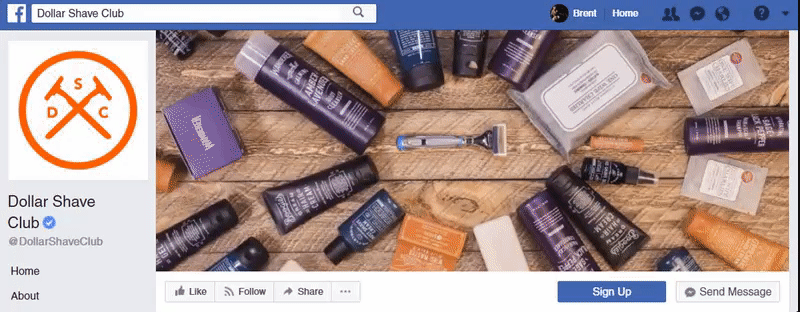
You don’t need to be a design wizard to achieve this level of style of Facebook, by the way.
Based on our social image sizing guide, Facebook is looking for the following for your photos:
- 180 x 180 pixels for your profile pictures (which shows up as 50 x 50 pixels via mobile, so don’t cram too much text in there)
- 820 x 320 pixels for your cover photos (which will stretch if they’re any smaller)
As a rule of thumb, you should always work with high-quality, high-resolution photos as a starting point of looking like a million bucks.
If you’re looking to step up your design game, consider the free image tools out there to help design Facebook-specific logos and photos.
For example, there are tools like LogoGarden which are perfect for creating clean, stripped down logos:
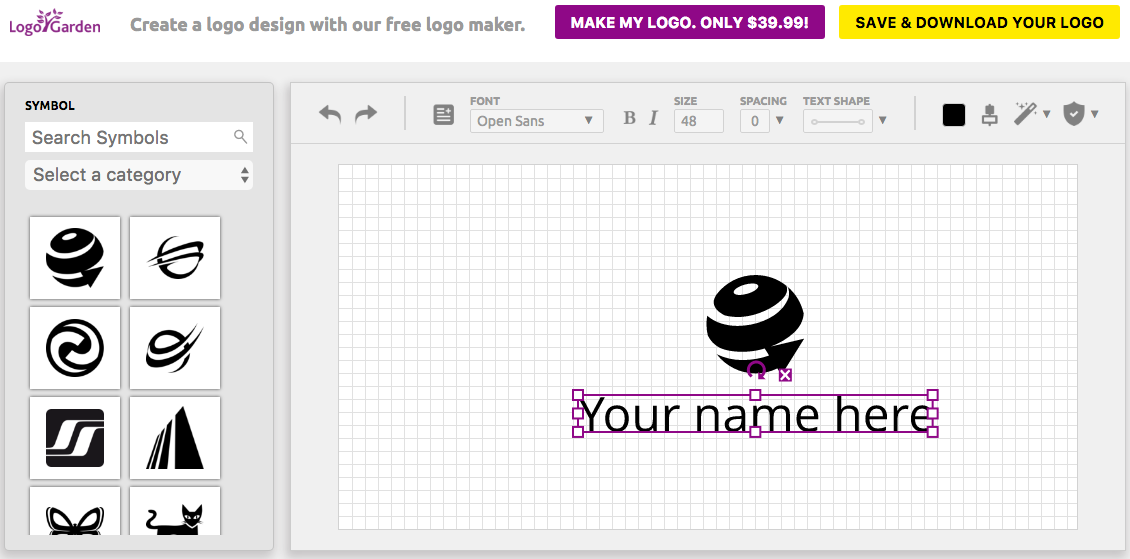
And for Facebook cover photos, tools such as our very own Landscape can do the trick for free!

A final piece of “looking the part” is getting your profile verified by Facebook. Subtle but significant, verified profiles score a sweet checkmark that confirms to followers that you’re a legit, active brand.
Bigger brands and public figures are denoted by a blue checkmark:
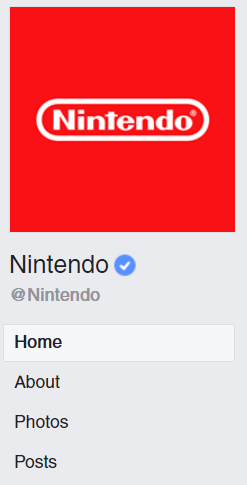
Meanwhile, any business profile can earn a gray badge upon verification:
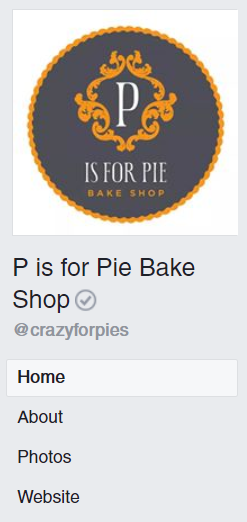
Once your profile is complete from a visual standpoint, the next half of your Facebook audit digs deep at your profile’s performance and how to move forward in terms of your content.
3. Figure Out Where Your Facebook Page Stands
Breaking down your current Facebook metrics is key to nailing down a content strategy. Whether you’re struggling with Likes or aren’t sure about your brand’s reach, your data can clue you in on what to do next.
Facebook Insights is invaluable for understanding how your page is performing and what’s encouraging interactions between you and your followers.
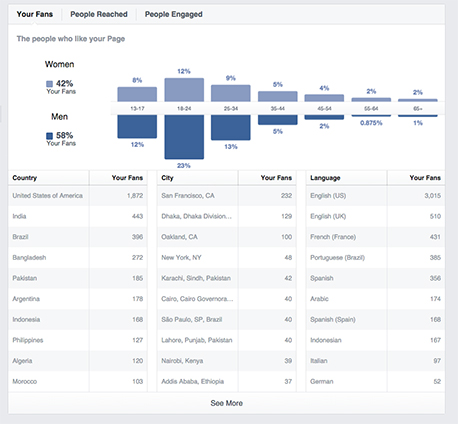
For example, Insights is capable of breaking down the following in detail:
- Likes, including Net Likes (number of new followers versus follower lost) and specific pages or content that earned you a follower
- Reach, assessing how much people saw any given piece of content
- Posts, including your most successful post types and when your audience is online
- Video insights, including how much time people spent on your video content
These data points can ultimately inform what content is resonating with followers and what’s falling flat. Each of these points is especially important if you’re interested in running Facebook ads.
Many of these very same points are covered by Spout’s Facebook analytics, too. Sprout’s dashboard is incredibly convenient for understanding your Facebook growth at a glance, all in one place.
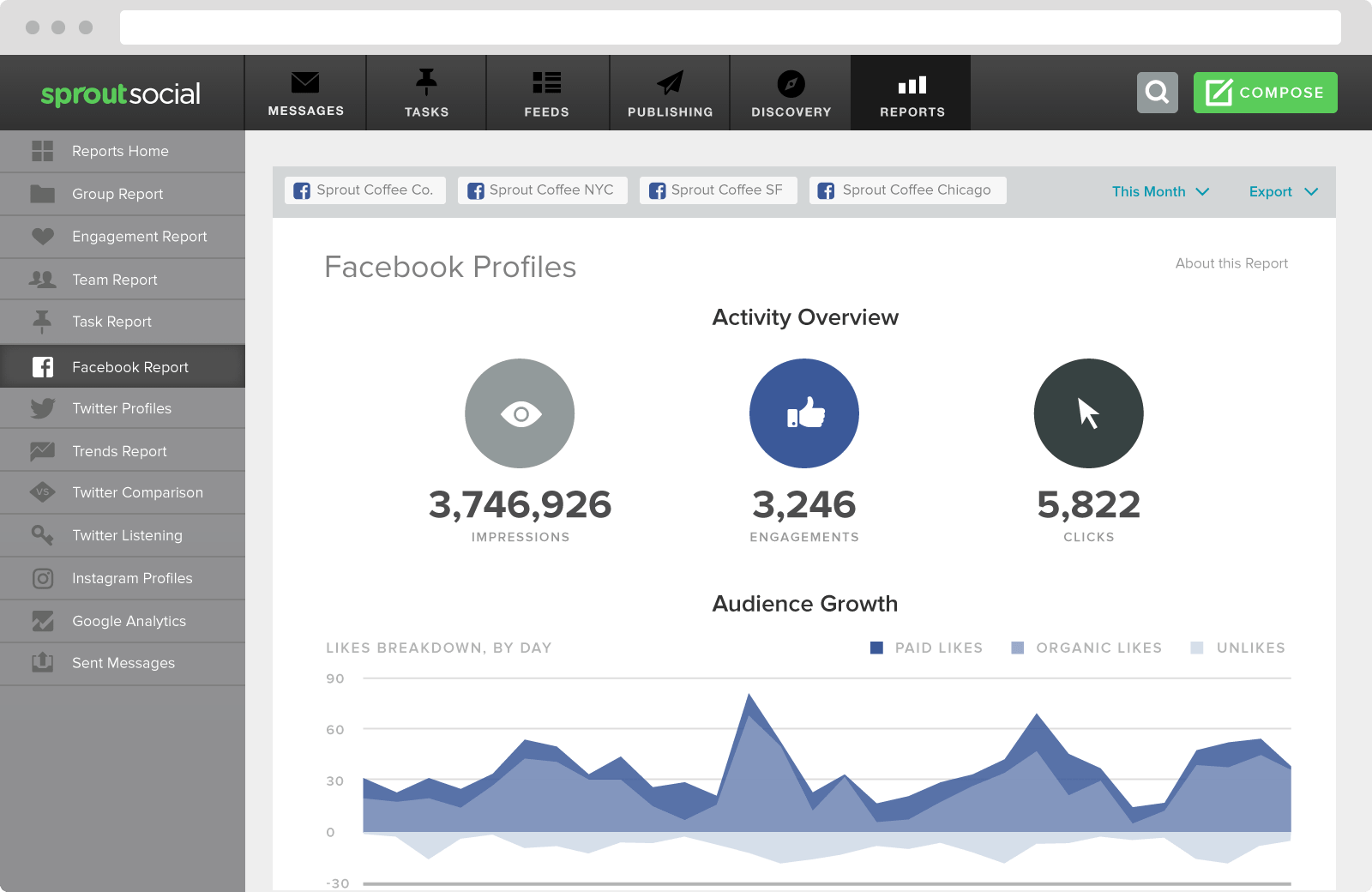
Additionally, Sprout’s Facebook competitive analysis feature helps you understand how your numbers stack up against your top competitors.

4. Fine-Tuning Your Facebook Content Strategy
You’ve spent some time digesting your metrics. Now what?
The final step of a Facebook audit involves making decisions based on the data you’ve gathered. Answering the following three questions can help guide your content moving forward and turns your audit into action.
What’s My Top Performing Content?
When you know what performs best among your followers, you’re more likely to make more of it, right?
Remember that Facebook’s latest update will have a direct impact on how brands of all shapes and sizes approach their content. Live Video, discussion-based posts and content without external links are all noted by Facebook to be a brand’s best bet for reaching people.
Combined with what you already know about your top performing posts, you can hone in on a content strategy that stays in line with what Facebook wants and what your followers already love.
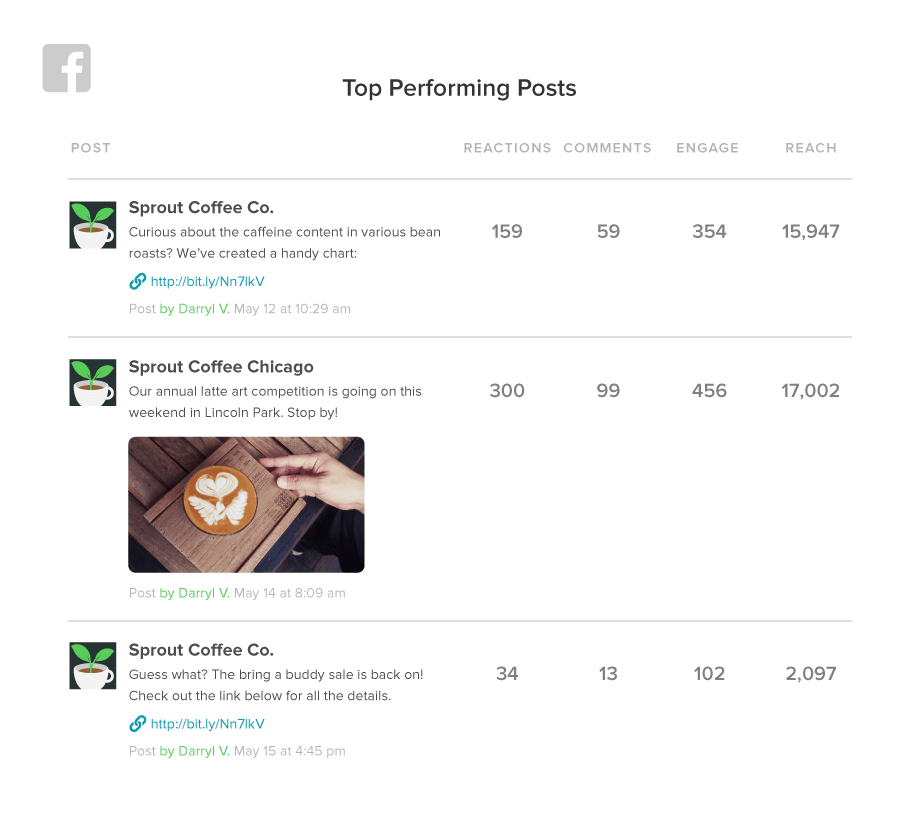
How Often Should You Post?
Posting frequency is a thorn in the side of many brands. If your data seems inconclusive or you can’t seem to find that sweet spot for how often to post, consider Sprout’s own data on the best times to post on social media.
While there is some variance from industry to industry, these suggestions are a much safer bet than just posting haphazardly.
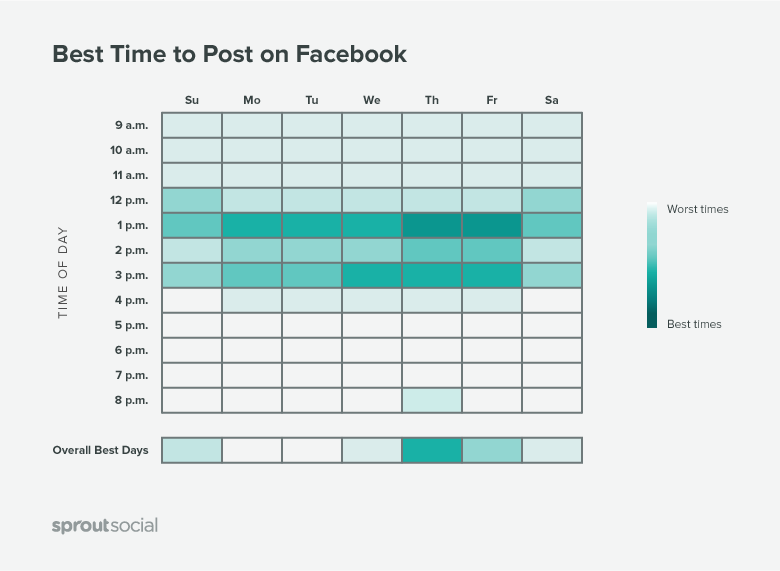
Are You Posting Consistently?
The common thread between all brands that do well on Facebook?
They post consistently.
Unless you’re a famous celebrity, you can’t expect to post once every few months and gain any sort of traction. Regularly keeping your followers in the loop about what your business is up to is not only Marketing 101, but earns new customers time and time again.
Think about it. What message are you sending to potential customers if you’re letting your Facebook page gather cobwebs?
With the help of Facebook scheduling via Sprout, you can regularly fill your feed with fresh content that your followers will love. Without having to worry about posting in real-time, you can spend more time engaging with your customers instead of sweating about your Facebook feed.
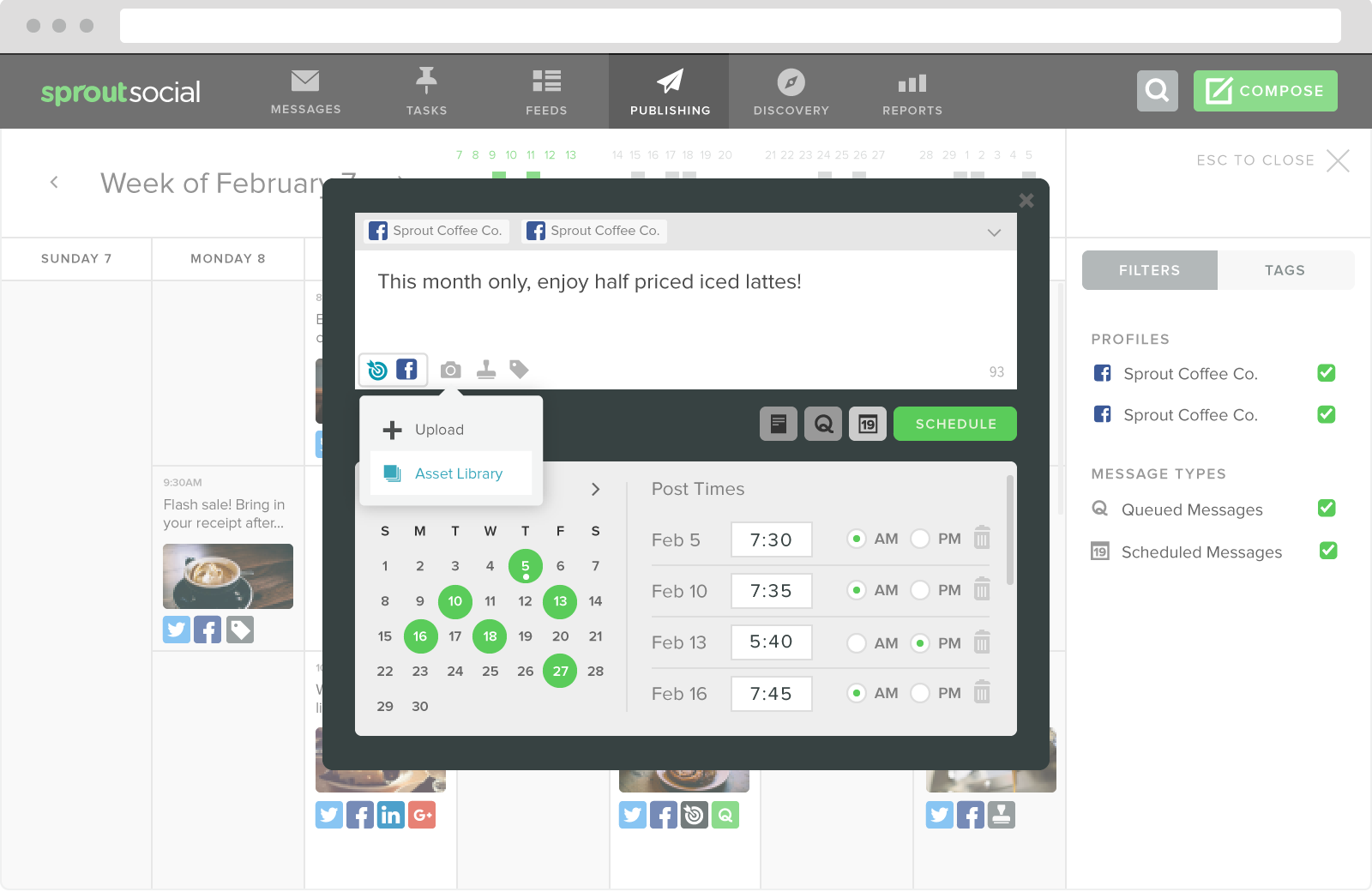
And that wraps up our guide! Pretty painless, right?
Ready to Conduct Your Own Facebook Audit?
No matter how you slice it, Facebook is changing and brands need to keep up.
Rather than worry about your content getting buried or losing followers in the face of the latest update, take action. Considering how quick and easy an audit is, every brand should conduct one from time to time to give themselves some much-needed peace of mind.
When’s the last time you looked at your Facebook performance in any sort of depth? Any thoughts on the platform moving forward? Let us know in the comments below.